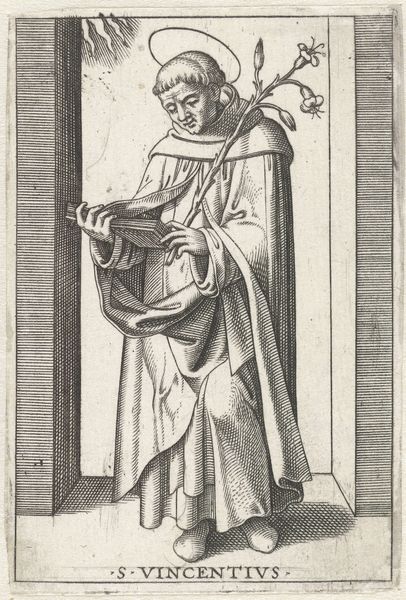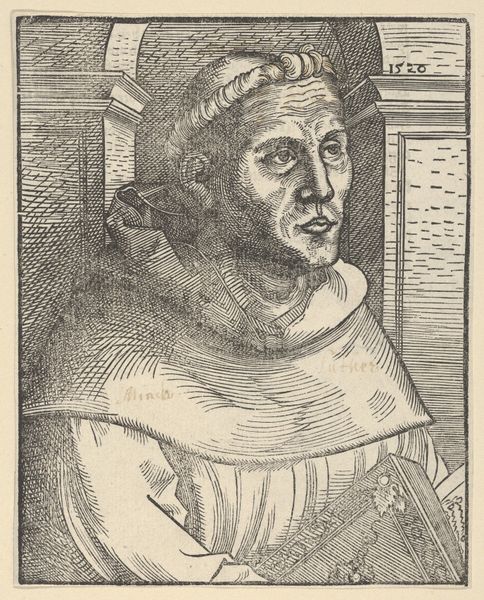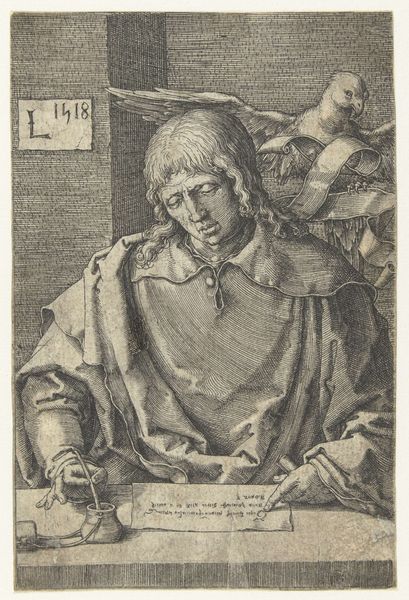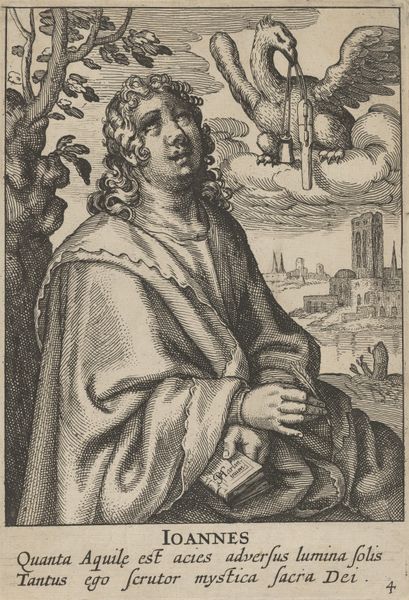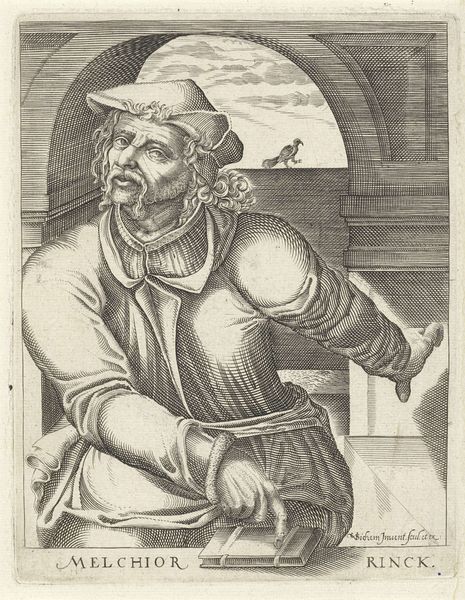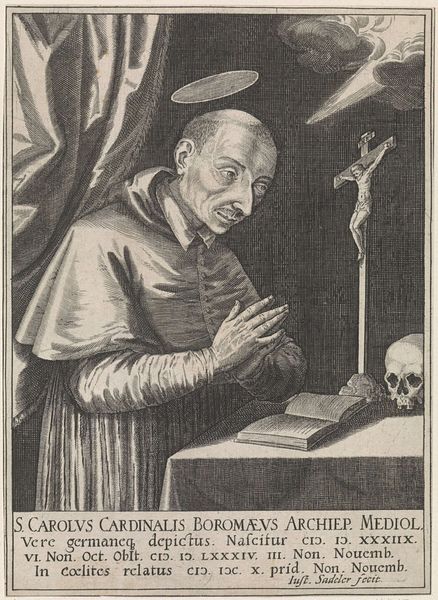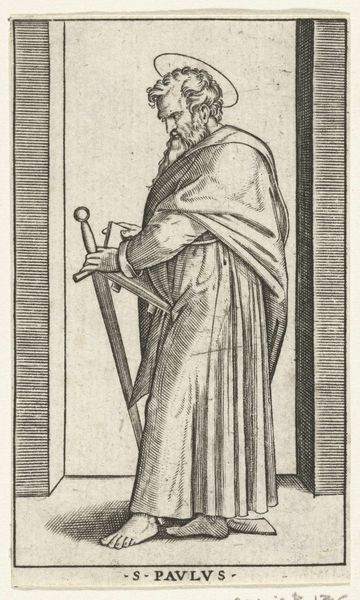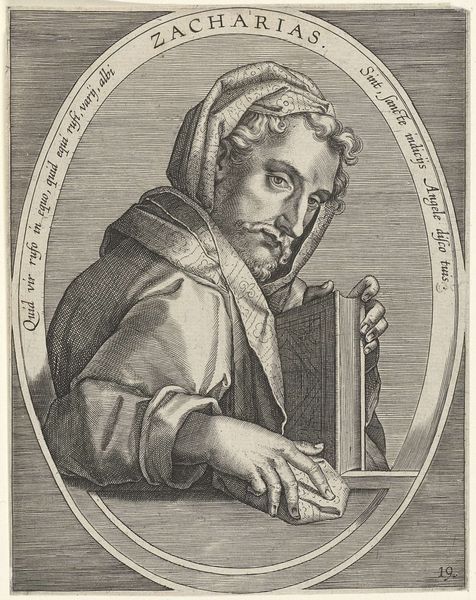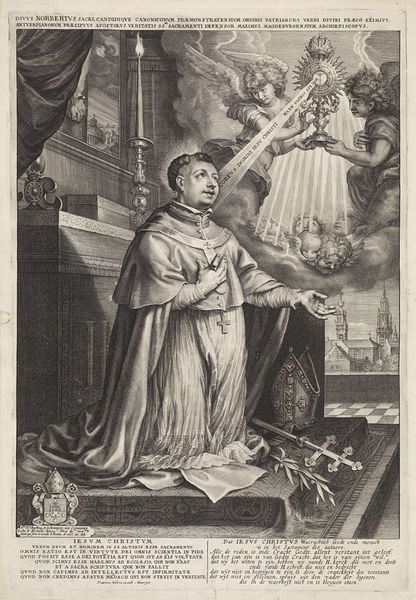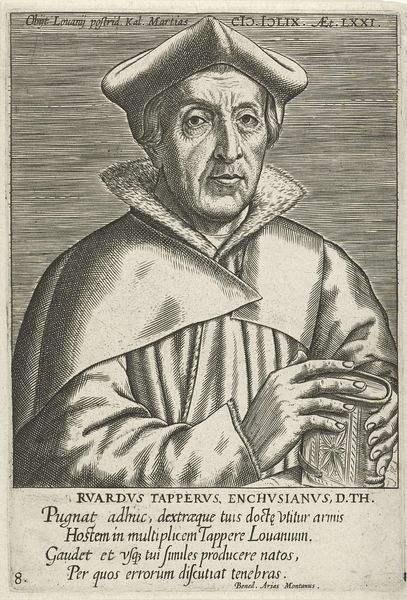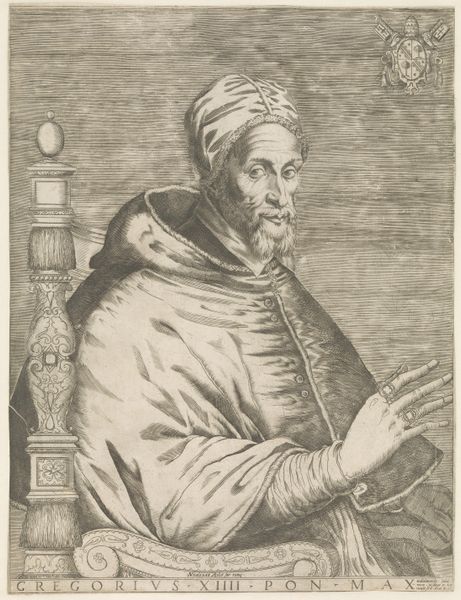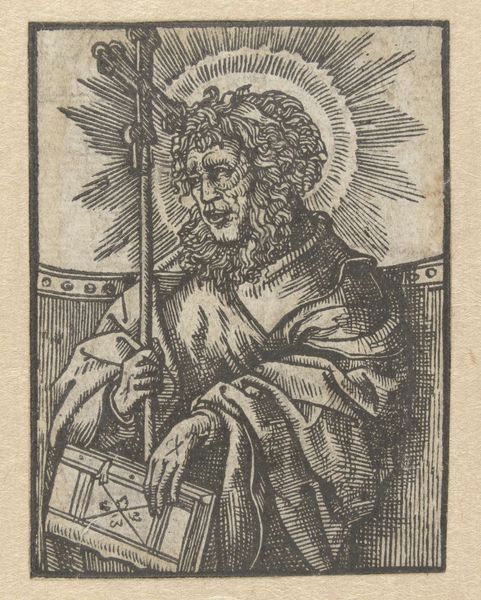
engraving
#
portrait
#
book
#
old engraving style
#
11_renaissance
#
history-painting
#
engraving
Dimensions: height 150 mm, width 104 mm
Copyright: Rijks Museum: Open Domain
This print of Saint Augustine was made by Johann Sadeler I around the turn of the 17th century, using an engraving technique. The incised lines hold the ink, transferring the image to paper under pressure. Look closely and you’ll see how the material – the copper plate – determined the aesthetic. Sadeler’s skillful handling of the burin allowed him to create the illusion of volume, light and shade through precise, closely-worked lines. See how the parallel hatching defines the folds of Augustine’s robes, or the saint’s furrowed brow. The printmaking process also has a social dimension. This wasn’t a unique artwork, but one of many impressions pulled from the plate. These were luxury commodities, sold to a growing class of collectors. Printmaking also relied on collaboration, from the skilled artisans who made the paper and ink, to the printers and distributors who brought images like this to a wider audience. So while we might think of “Heilige Augustinus” as a work of art, it's also a testament to the skilled labor and material processes that underpinned early modern visual culture.
Comments
No comments
Be the first to comment and join the conversation on the ultimate creative platform.
